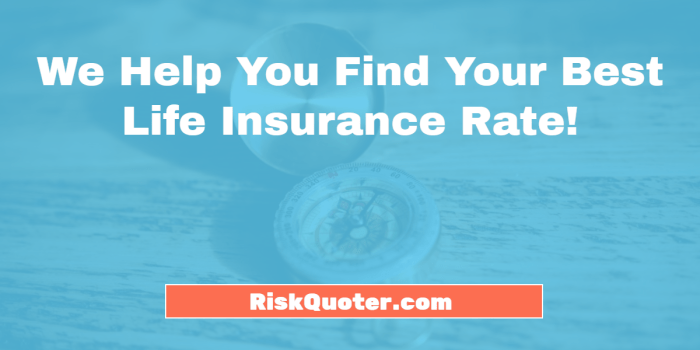What is the best insurance for people with a high-risk lifestyle? This question is on the minds of many who enjoy adrenaline-pumping adventures, travel to remote corners of the world, or work in dangerous professions. From skydiving to deep-sea diving, rock climbing to stunt work, the pursuit of excitement and passion often comes with inherent risks.
Navigating the world of insurance when you live life on the edge can feel like a minefield, but it doesn’t have to be.
This guide will break down the key types of insurance relevant to high-risk lifestyles, the factors to consider when choosing coverage, and how to find the best options for your individual needs. We’ll also explore risk management strategies to help you stay safe and minimize the chances of needing to file a claim.
Key Considerations for High-Risk Insurance

Getting the right insurance when you have a high-risk lifestyle can feel like navigating a maze. There are a lot of factors to consider, and understanding them is crucial for getting the best coverage at a price that fits your budget.
It’s all about finding the right balance between protection and affordability.
Risks Associated with High-Risk Lifestyles, What is the best insurance for people with a high-risk lifestyle?
Understanding the risks associated with your lifestyle is the first step in finding the right insurance. Different activities carry different levels of risk, and insurers factor these risks into their premiums. For example, if you’re a professional athlete, your insurance premiums will likely be higher than someone with a sedentary lifestyle.
Here’s a look at some common high-risk lifestyles and the specific risks they present:
- Extreme Sports:These activities like skydiving, rock climbing, and motorsports, carry a higher risk of injury or death. Insurance companies will take this into account when setting premiums.
- Dangerous Occupations:Jobs like construction, firefighting, and law enforcement involve inherent risks, and insurance companies will reflect this in their rates.
- Travel to High-Risk Destinations:Traveling to areas with political instability, high crime rates, or natural disaster risks can increase insurance costs.
- High-Risk Hobbies:Even hobbies like motorcycle riding or scuba diving can be considered high-risk and affect insurance premiums.
Advantages and Disadvantages of High-Risk Insurance Providers
Not all insurance providers are created equal. Some specialize in offering coverage for high-risk individuals and activities. It’s important to compare different providers and their offerings to find the best fit for your needs.
- Advantages:
- Specialized Expertise:High-risk insurance providers have a deep understanding of the unique risks associated with different lifestyles and can offer tailored coverage.
- Wider Coverage Options:They may offer coverage for activities or situations that traditional insurers might exclude.
- Competitive Pricing:While premiums might be higher than traditional insurers, high-risk providers often offer competitive rates within their niche.
- Disadvantages:
- Limited Availability:Not all high-risk insurance providers operate in every region, and their availability can vary.
- Stricter Underwriting:High-risk providers often have more stringent underwriting processes, which can lead to longer approval times or potential denials.
- Potential for Higher Premiums:While competitive, premiums may still be higher than traditional insurers due to the increased risk involved.
Understanding the Fine Print
The fine print of your insurance policy is crucial. It Artikels the terms and conditions of your coverage, including exclusions, deductibles, and limitations. These details can significantly impact your financial protection in case of an accident or claim.
- Exclusions:These are specific events or circumstances that are not covered by your insurance policy. For example, your policy might exclude coverage for certain extreme sports or activities.
- Deductibles:This is the amount you are responsible for paying out-of-pocket before your insurance coverage kicks in. Higher deductibles often result in lower premiums.
- Limitations:These are restrictions on the amount of coverage you have. For example, there might be a limit on the amount of medical expenses covered or the total payout for a specific type of claim.
“Always read your insurance policy carefully and ask questions if you don’t understand anything. It’s better to be safe than sorry.”
Final Thoughts

Living a high-risk lifestyle doesn’t mean you have to forgo the peace of mind that comes with proper insurance. By understanding your options, carefully considering your needs, and proactively managing risks, you can find the right coverage to protect yourself and your loved ones.
Whether you’re an adrenaline junkie, a globetrotter, or a professional in a high-risk field, remember that insurance is there to support you when the unexpected happens. So, take the time to explore your options, get the right coverage, and continue to pursue your passions with confidence.
Questions Often Asked: What Is The Best Insurance For People With A High-risk Lifestyle?
What are some examples of high-risk professions?
Some examples of high-risk professions include construction workers, firefighters, police officers, pilots, and offshore oil rig workers. These jobs often involve physical danger, exposure to hazardous materials, or high-stress environments.
How much does high-risk insurance cost?
The cost of high-risk insurance varies depending on factors like your age, health, risk profile, and the type of coverage you need. It’s generally more expensive than standard insurance due to the increased likelihood of claims.
What are some common exclusions in high-risk insurance policies?
Common exclusions in high-risk insurance policies may include coverage for pre-existing conditions, certain types of activities (like extreme sports), or injuries resulting from reckless behavior.
